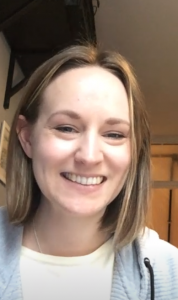“It’s refreshing to read about someone else so successful that thinks like me because of how their brain is wired, which has often only been seen as a learning disability. I’ve always known I had a different way of seeing the world which became more apparent when I started working. I’ve often been able to see solutions that other people have missed, spot patterns and predict the next step, links and opportunities. It’s nice to be able to attribute that to a cause that used to hold me back a lot. I like John’s explanation of the method I use “gather lots of data, step back, and connect the dots to see trends.”
In Medium, Emma Wallace begins a post saying that she was planning to write a review of John Chambers’ recent book, Connecting the Dots, but then found herself being diverted and reflecting on her own life after reading his chapter, “Think Like a Dyslexic.”
Said Emma,
“As a dyslexic I’ve only really been aware of it as a weakness and something to overcome. Seeing my struggles through reading, short term memory and learning difficulties and as something to hide and try and cover, not fully appreciating the gifts it has actually given me and the kind of person it has made me become. I always feel the sting of anxiety when someone laughs at my misreading or spelling (yes, I knew it was chief not chef, thank you). It’s only fairly recently that my perception of it has begun to change and more widely that the strengths from it are becoming known.”
Talent for “connecting the dots” can be valuable in all disciplines that require innovation in order to grow and survive. Businesses, marketing, technology, science, all these fields need the connect-the-dots abilities that many dyslexic people have.
 “While reading about John Chambers’ dyslexia…learning about his experience and perspective has definitely come at a time when I’ve needed to define my strengths and skills. It has really helped me shift my perspective, made me see it as one my strengths and that I should be more open about it.”
“While reading about John Chambers’ dyslexia…learning about his experience and perspective has definitely come at a time when I’ve needed to define my strengths and skills. It has really helped me shift my perspective, made me see it as one my strengths and that I should be more open about it.”
If school doesn’t provide much opportunity for connecting the dots, then parents should look for opportunities outside of school in hobbies and extracurriculars (like our Ingenuity Awards!), or even some after school jobs.
Parents and teachers can encourage skills like connecting the dots when they ask students to reason about problems and situations and pose potential solutions. Connecting the dots involves recognizing patterns, questioning assumptions, and making analogies.
In science, connecting the dots can take place in lab experiments when students are asked to make predictions. In history, students can be asked to connect the dot if they think their way through historical events (replaying history or imagining ‘what-ifs’).

Click to be taken to John Chamber’s Conecting the Dots book on Amazon. Its undertitle is Lessons for Leadership in a Startup World.
When I managed to catch up with Emma, I asked her about her career in the fashion and retail industry and more about how she identified her strengths.
From my interview with her:
 “For me, it was about knowing how everything works and having a big mindmap about the company and the industry and how everything inter-related…being able to connect, say – these products do well, so why cut there, how can we sell to these customers and connected to the marketing team – just be this person who has this big web in their head of how things connect together. ”
“For me, it was about knowing how everything works and having a big mindmap about the company and the industry and how everything inter-related…being able to connect, say – these products do well, so why cut there, how can we sell to these customers and connected to the marketing team – just be this person who has this big web in their head of how things connect together. ”
Emma’s position was as a “Category Leader.” She worked with the product group and strategized how to deliver the best to customers. She would see the whole story – do the concept (what does the market need?) what products can I fulfill there, and then make sure it was executed and delivered. The analogous position, Emma told me would be Head of Merchandizing.
When Emma was leaving the university, she looked at fashion trends and felt that pure fashion wasn’t for her. She recognized that markets were evolving into sportswear.
“To me that was where things that were really interesting were happening. That’s where innovation was going on and that was where people were moving to – and that’s what definitely happened. After 6-8 years, these brands like Lululemon are growing exponentially whereas the rest of the industry is not growing as much.”
When Emma looked back at why she was successful for the past 6 years with her company, she realized that although she joined at a junior level, she was able to forge a path for herself to use her skill sets best.
This reminded me of Erin Egan’s talk about her jobs with large companies. Erin had told us that she never ended up working in the job title that she was initially hired for because her talents and skill sets didn’t fit neatly into boxes or job description categories. She was fortunate to be able to rise to the levels of her abilities. Talents of this sort are best allowed to develop if they are given the freedom, authority, and resources to act on what they’ve been able to discover.
In summary, connecting the dots is a wonderful skill to have – but it’s also probably worthwhile to recognize that it’s a big picture rather than “little picture” strength. Workers who are good at connecting the dots will find their work most satisfying when either their supervisors recognize their talents or they have executive positions that allow them to act on their predictions.
















I am a comparatively slow learner. But I am a deep learner because I need to connect dots as I go. Once a dot is connected, it is available in an unconstrained context.
There are some connections I can make in problem solving I can’t explain.
In a work setting, I connect dots and I am able to see around corners as a result. For better or for worse I choose to not pursue a senior management role. I have learned connecting dot for others is a painful exercise and often times I need to give up and simply let the crap happen, and it always does.